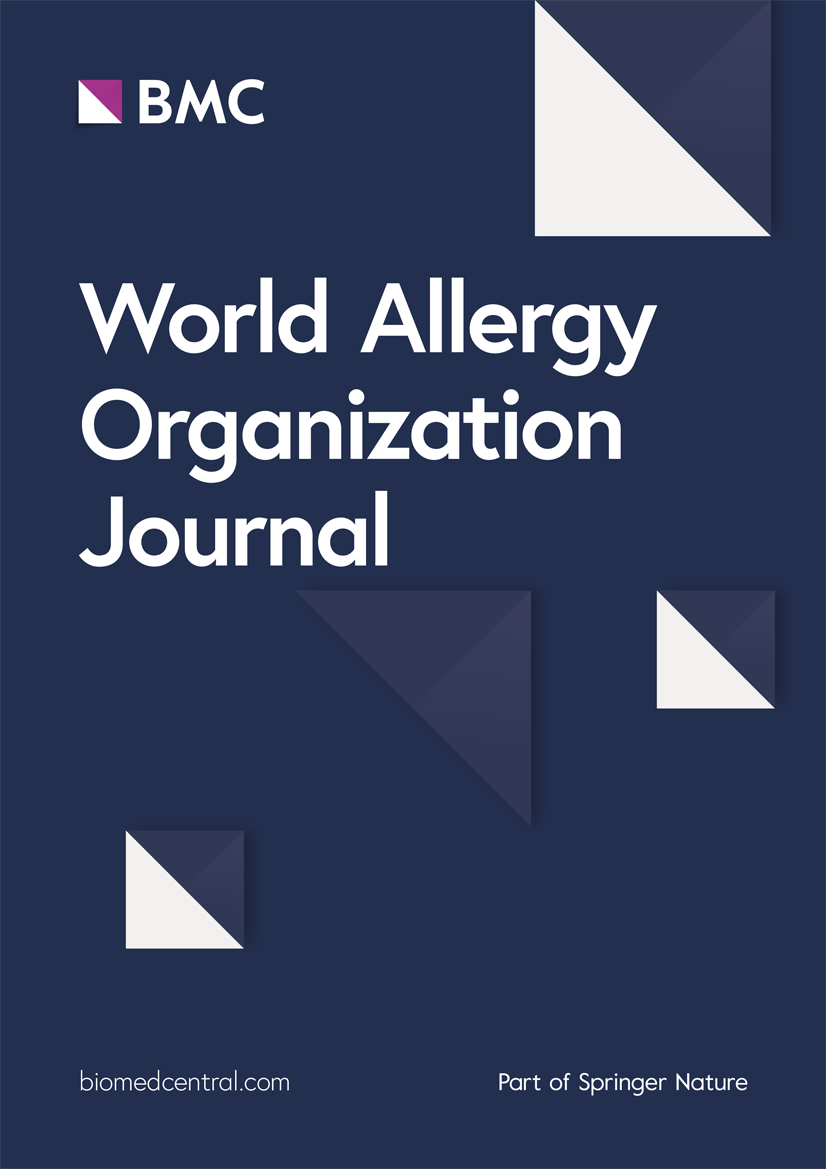Profile of mild/moderate asthma patients: Baseline data from the MANI cohort
IF 4.3
2区 医学
Q2 ALLERGY
引用次数: 0
Abstract
Although 90% of asthmatic patients suffer from mild and moderate disease, little is known about the burden on health status and quality of life, the long-term trajectory of disease severity, and the socio-economic impact. The Mild Moderated Asthma Network of Italy (MANI) is a real-world, cross-sectional, prospective, observational cohort study designed to explore these issues. Here we aimed to provide an identikit of asthmatic patients receiving treatment according to GINA steps 1–4, and enrolled in the centers of excellence participating in the MANI. Among 679 analyzed patients, 63% were female, and the mean age was 50 ± 16 years. Asthma was mild in 15.8% of patients (GINA steps 1–2) and moderate in 84.2% (GINA steps 3–4). The mean age of asthma diagnosis was 34.3 ± 17.7 years, 50% of patients were suffering from allergic rhinitis, and 13% from nasal polyposis. Mean FEV1% was 91.4 ± 19.4%, predicted with a FEV1/FVC ratio of 74.7 ± 11.9. The mean asthma control test value was 21.2 ± 3.73, and AQLQ score was 5.74 ± 1.07. Among the included patients, 17.2% had at least one asthma exacerbation in the previous year, with 14.2% requiring systemic steroids; 6.2% were referred to an emergency room in the year prior to enrollment; 2.2% required an asthma-related hospitalization; and 0.6% had been admitted to an Intensive Care Unit (ICU). Unscheduled visits were necessary for 3.8% of patients, 6.5% reported ≥5 lost work days due to asthma, and 11.5% declared ≥10 lost days of spare time. About 70% of patients were receiving treatment according to GINA Track 1. Uncontrolled cases constituted 16.7% of patients treated according to GINA steps 1–2, and 26.3% of patients treated according to GINA steps 3-4 were uncontrolled. Compared to patients with mild asthma, those with moderate asthma had more impaired lung function (FEV1% 88.5 ± 18.4 vs 94.4 ± 17.9, p = 0.05; FEV1/FVC 73.0 ± 9.76 vs 79.6 ± 9.56, p > 0.001), exhibited greater need for systemic corticosteroids for treating exacerbations (13.8% vs 2.3%, p = 0.032), and showed greater adherence to therapy (TAI score 50.0 ± 5.66 vs 45.7 ± 8.42, p < 0.001). Overall, mild/moderate asthma exhibited a substantial clinical and care impact. Patients treated with GINA steps 3–4 constituted the vast majority of patients attending specialist centers. A quarter of these patients were uncontrolled, and therefore need re-evaluation or treatment upgrade. Expanding recruitment of the MANI study will allow further phenotyping of these patients.
轻度/中度哮喘患者概况:来自MANI队列的基线数据
尽管90%的哮喘患者患有轻度和中度疾病,但对其对健康状况和生活质量的负担、疾病严重程度的长期轨迹以及社会经济影响知之甚少。意大利轻度缓和哮喘网络(MANI)是一项现实世界、横断面、前瞻性、观察性队列研究,旨在探讨这些问题。在这里,我们的目的是提供一个根据GINA步骤1-4接受治疗的哮喘患者的识别,并在参与MANI的卓越中心登记。679例患者中,女性占63%,平均年龄50±16岁。15.8%的患者为轻度哮喘(GINA步骤1-2),84.2%为中度哮喘(GINA步骤3-4)。哮喘诊断平均年龄为34.3±17.7岁,变应性鼻炎占50%,鼻息肉病占13%。平均FEV1%为91.4±19.4%,FEV1/FVC比值为74.7±11.9。哮喘控制测试平均值为21.2±3.73,AQLQ评分为5.74±1.07。在纳入的患者中,17.2%在前一年至少有一次哮喘发作,14.2%需要全身性类固醇;6.2%的人在入组前一年被转诊到急诊室;2.2%需要因哮喘住院治疗;0.6%曾入住重症监护病房(ICU)。3.8%的患者需要进行计划外就诊,6.5%的患者报告因哮喘损失了≥5天的工作日,11.5%的患者报告损失了≥10天的业余时间。约70%的患者接受了GINA Track 1的治疗。按GINA步骤1-2治疗的患者中,未控制病例占16.7%,按GINA步骤3-4治疗的患者中,未控制病例占26.3%。与轻度哮喘患者相比,中度哮喘患者肺功能受损更严重(FEV1% 88.5±18.4 vs 94.4±17.9,p = 0.05;FEV1/FVC 73.0±9.76 vs 79.6±9.56,p >;0.001),表现出对全身皮质类固醇治疗加重的更高需求(13.8% vs 2.3%, p = 0.032),并表现出更高的治疗依从性(TAI评分50.0±5.66 vs 45.7±8.42,p <;0.001)。总体而言,轻度/中度哮喘表现出实质性的临床和护理影响。接受GINA步骤3-4治疗的患者占专科中心就诊患者的绝大多数。这些患者中有四分之一无法控制,因此需要重新评估或升级治疗。扩大MANI研究的招募将允许进一步对这些患者进行表型分析。
本文章由计算机程序翻译,如有差异,请以英文原文为准。
求助全文
约1分钟内获得全文
求助全文
来源期刊

World Allergy Organization Journal
Immunology and Microbiology-Immunology
CiteScore
9.10
自引率
5.90%
发文量
91
审稿时长
9 weeks
期刊介绍:
The official pubication of the World Allergy Organization, the World Allergy Organization Journal (WAOjournal) publishes original mechanistic, translational, and clinical research on the topics of allergy, asthma, anaphylaxis, and clincial immunology, as well as reviews, guidelines, and position papers that contribute to the improvement of patient care. WAOjournal publishes research on the growth of allergy prevalence within the scope of single countries, country comparisons, and practical global issues and regulations, or threats to the allergy specialty. The Journal invites the submissions of all authors interested in publishing on current global problems in allergy, asthma, anaphylaxis, and immunology. Of particular interest are the immunological consequences of climate change and the subsequent systematic transformations in food habits and their consequences for the allergy/immunology discipline.
 求助内容:
求助内容: 应助结果提醒方式:
应助结果提醒方式:


